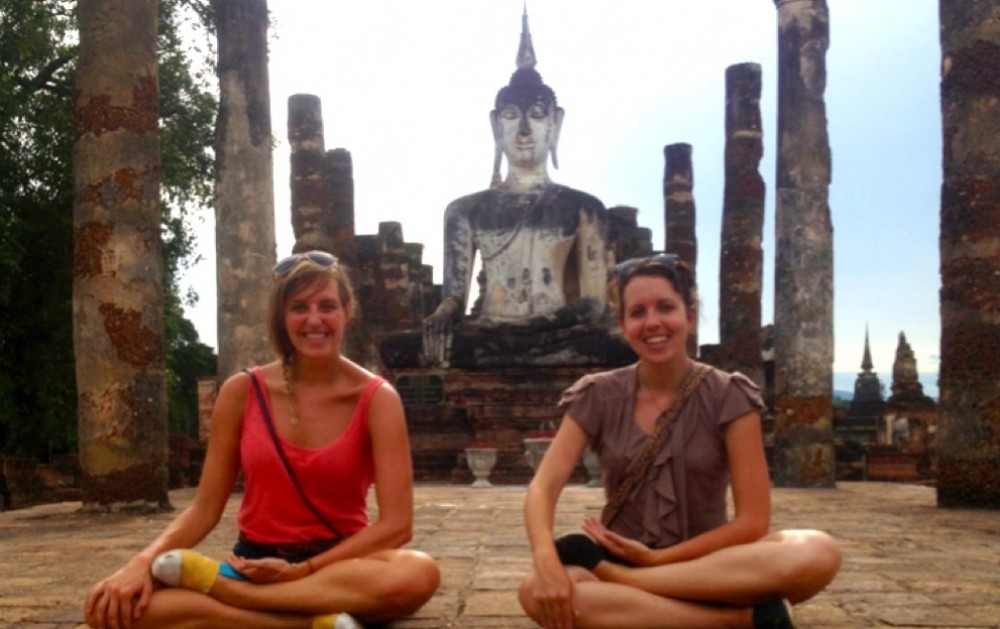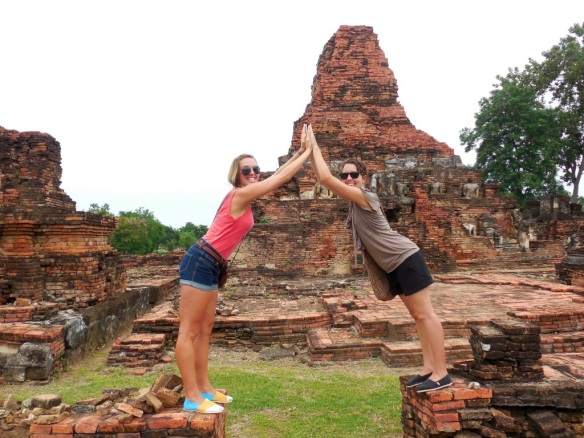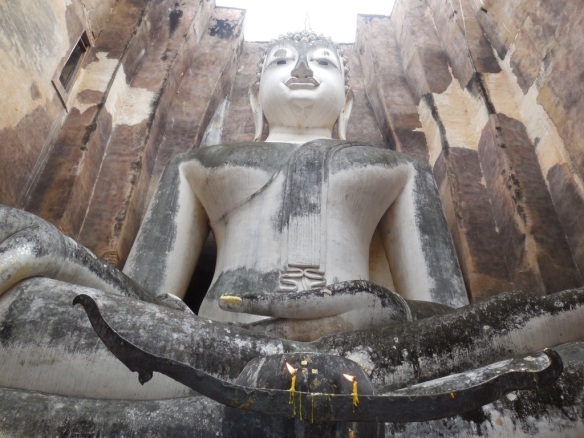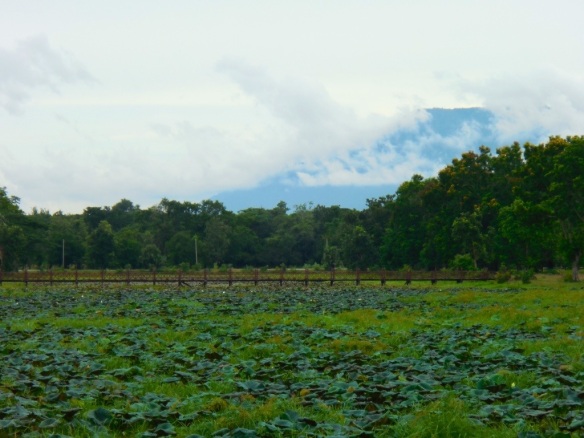Now for something completely different. 100% different. Marianna and I stepped of the train in Pitsanaluk, Thailand a little stunned. It was because of what we didn’t see, not what we saw. No English words, no tourist information center, no thing remotely familiar. Hungry, we waded through the night market outside the train station pointing at vats of unfamiliar savory foods thrown into a styrofoam container destined to become our dinner. We were two bulls in a china shop, our bulky backpacks strapped on, fumbling with our Baht and limited Thai words. Despite our obtrusive presence, these respectful, sweet people did not bat an eye at us. If I were a vendor or visitor on this street, I would have stared, pointed, giggled at our over-the-top gesticulating communication style. Instead, we were swallowed without hiccup into the crowd of locals buying galanga root to make their soup for dinner, catching up with the egg-lady on the corner, or pointing to a the row of plastic bags, tied at the top, filled with some sort of vegetable/meat soupy-goodness. Dinner to go.
Sukothai, I was told by my lonely planet, is best explored on bike. After some negotiating- remember, no price is ever final here- we wiggled our way into a private bike tour with the tall, thin, knowledgable, and gracious guide, Jip. Upon arriving at Jip’s house, he handed us two helmets, matching trek bikes, complimenting our “beautiful white skin” and lots of smiles.
Toms on, helmets strapped, coated with bugspray and sunscreen, we took off to explore these ancient ruins.
Traveling the 6km from Jip’s house to the old ruins, we passed idyllic rice paddy fields and smiley villagers fascinated by our white skin and light hair. “They never see people like you around,” Jip told us. “Most of these people will never leave their village or know other places in the world.”
Jip spouted information about all things Thailand. He pointed to the rice field, identifying the crop’s age, describing planting techniques, telling about the husband and wife living and working deep into old age in a small shack in the middle of a field. As a young person, Jip too worked in the rice paddies. “The most strenuous work,” he told us, his lean body shaped now by the hours of cycling instead of lifting machinery and bending over to sow the land. He explained the process for making rice, showed us a teakwood making factory, and described the ins and outs of village life.
As we wound through the dirt paths following the river, Jip described his monkhood. First ordained as required by the king, he spent two years in the orange robes, studying buddhism and meditating. Like many of the people I have encountered in Thailand, Jip talked about Buddha’s teachings.
Mindfulness, emptying the mind, good heart, giving kindness. The interrelatedness of the human family through suffering. The inevitability of suffering. The ability to end it.
Cycling, moving forward, I spotted the first grouping of ruins in the midst of a rice field, decorated by moss and surrounded by a husband-wife-rice-farming team’s land. Sukothai’s ruins are the majestic remains of the great Khmer Empire, the first capital of Thailand. Here, in 1257, the Thai alphabet was written, a city thrived, culture, and architecture developed. Sukothai means “rising happiness.” I felt the age of the bricks beneath my feet, studying the “chedi” structures where the ashes of kings reside, and peered into the downcast eyes of the massive Buddhas before me. Cycling from one ruin to another, Jip told us of the purpose for various structures, most, like many ancient cities supporting life, intended to honor and send off loved ones into death.
My favorite temple was Wat Mahathat. Walking about to the old building, Buddha peeked between two great stone walls. As we approached Buddha, Jip handed us fragrant sticks of incense and two candles. “Make a wish to Buddha,” he whispered. “Send out a prayer.
Walking into the walls of the temple, we were alone. The space was cool, shaded and protected from the sun’s heat by old solid stones. I felt the sacredness, the age. The ancient place of people that came before Buddha in need of guidance in such a confusing, difficult life. They too were finding their way. Perhaps saying farewell to love lost, fearful of challenges ahead, looking for a way to accept, to release. We lit the incense. As the smoking aroma rose, Jip showed Marianna and I how to melt the wax on our candles. “Let it drip on the metal bar, and create a solid base.” The hot wax melted and I pushed my candle down firmly.
Serene silence.
“Send out your wish,” encouraged Jip. “You can’t tell anyone about it, ask the Buddha for guidance.” And so I did. My heart’s needs spoke out, floating to the big Buddha, floating on the tail and trail of the light incense smoke, floating with the wishes of centuries before, feeling small. And human. And real.





